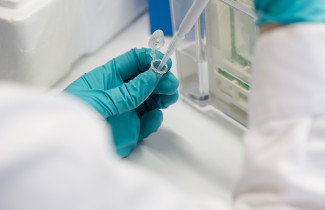The PhD thesis of Emma Heikkinen, MSc (Pharm), provides insights into ocular pharmacokinetics and new approaches for the design of drugs and drug delivery systems.
Age-related macular degeneration (AMD), diabetic retinopathy, glaucoma and cataract are the leading global causes of vision loss. The wet form of AMD is treated with monthly or bi-monthly intravitreal drug injections, and glaucoma with daily eye drops, both of which burden the patients. Some eye diseases, such as dry AMD and cataract are lacking drug therapies. Thus, there is a clear need for new drugs and drug delivery systems with sustained effects. Pharmacokinetic and delivery aspects pose a challenge to ocular drug development. New information on the factors affecting ocular drug pharmacokinetics would benefit ocular drug development.
The aim of the thesis work was to gain new insights in ocular pharmacokinetics and new approaches for the design of drugs and drug delivery systems. The first aim was to define the esterase activities of porcine and rabbit ocular tissues - an important feature in the design of prodrugs and biodegradable controlled release materials. The second aim was to develop resource-efficient methods for preclinical pharmacokinetic screening of drug properties. Thirdly, the correlation between the structure and hydrolytic behavior for ocular prodrug candidates was investigated. The fourth aim was to evaluate drug distribution in the lens, and to simulate the effects of lenticular drug partitioning on topical pharmacokinetics. Finally, the researchers simulated the effects of drug dose, release rate and clearance on the resulting free drug concentrations in the vitreous after application of an intravitreal implant.
Significant differences were detected in esterase activities among the ocular tissues and between two species (rabbit, pig) and a method was proposed for scaling in vitro enzyme activity to the whole tissue level. Cassette dosing proved useful in studying prodrug hydrolysis in ocular tissues and supported the concept that the chemical linkers and steric factors around the cleaving bond affect prodrug hydrolysis. Partitioning of various drugs to the lens was low, and based on imaging mass spectrometry, most drugs distributed only to the surface of the lens. The pharmacokinetic simulations indicated that drug partitioning to the lens does not influence drug concentrations in the aqueous humor. Finally, pharmacokinetic simulations revealed that drug clearance from vitreous increases the requirements of drug potency and drug load in intravitreal implants.
The methods and data of this study may be beneficial in the development of novel drugs and delivery systems for ophthalmic use.
The doctoral dissertation of Emma Heikkinen, Master of Science (Pharmacy), entitled Pharmacokinetic and Methodological Insights into Ocular Drug Development, will be examined at the Faculty of Health Sciences. The Opponent in the public examination will be Bente Steffansen, PhD, Principal Scientist at LEO Pharma, and the Custos will be Docent Marika Ruponen of the University of Eastern Finland.
Photo available for download at https://mediabank.uef.fi/A/UEF+Media+Bank/37734?encoding=UTF-8
Heikkinen, Emma. Pharmacokinetic and Methodological Insights into Ocular Drug Development


